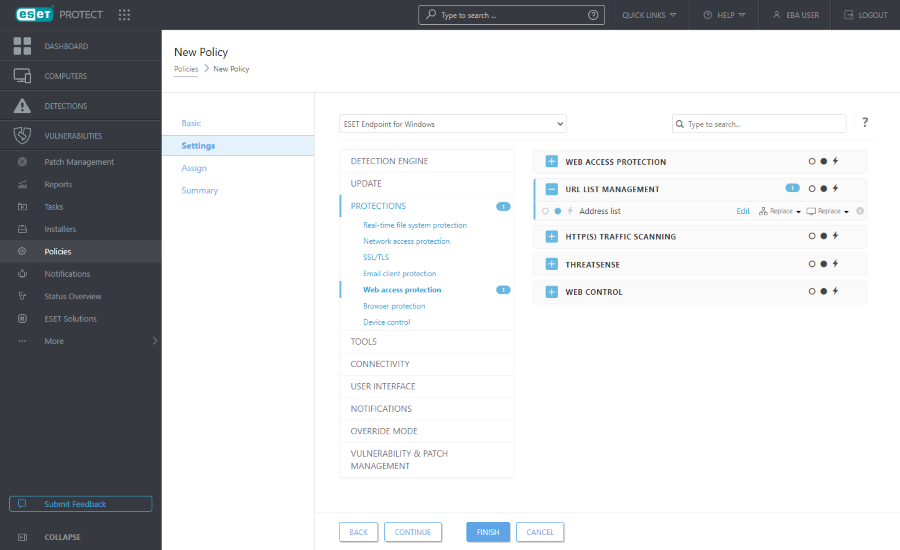Merging Policies
When you apply a policy to an ESET security product where another policy is already applied, the overlapping policy settings are merged. Policies are merged one by one. When merging policies, the general rule is that the later policy always replaces the settings set by the former one. To change this behavior, you can use policy flags (available for every setting). Some settings have another rule (replace / append / prepend) that you can configure.
Keep in mind that the structure of the groups (their hierarchy) and the sequence of the policies determines how the policies are merged. Merging of any two policies may have different results depending on their order.
When creating policies, you will notice that some settings have additional rules that you can configure. These rules allow you to arrange the same settings in various policies.
•Replace—The default rule which is used when merging policies. It replaces the settings set by the former policy.
•Append—When applying the same setting in more than one policy, you can append the settings with this rule. The setting will be placed at the end of the list that was created by merging policies.
•Prepend—When applying the same setting in more than one policy, you can prepend the settings with this rule. The setting will be placed at the beginning of the list that was created by merging policies.
Merging of local and remote lists
The recent ESET security products (see supported versions in table below) support merging of local settings with the remote policies in a new way. If the setting is a list (for example, a list of websites) and a remote policy is conflicting with an existing local setting, the remote policy overwrites it. You can choose how to combine local and remote lists. You can select different merging rules for:
•![]() Merging settings for remote policies.
Merging settings for remote policies.
•![]() Merging of remote and local policies - local settings with the resulting remote policy.
Merging of remote and local policies - local settings with the resulting remote policy.
Options are the same as mentioned above: Replace, Append, Prepend.

See also policy removal rules. |